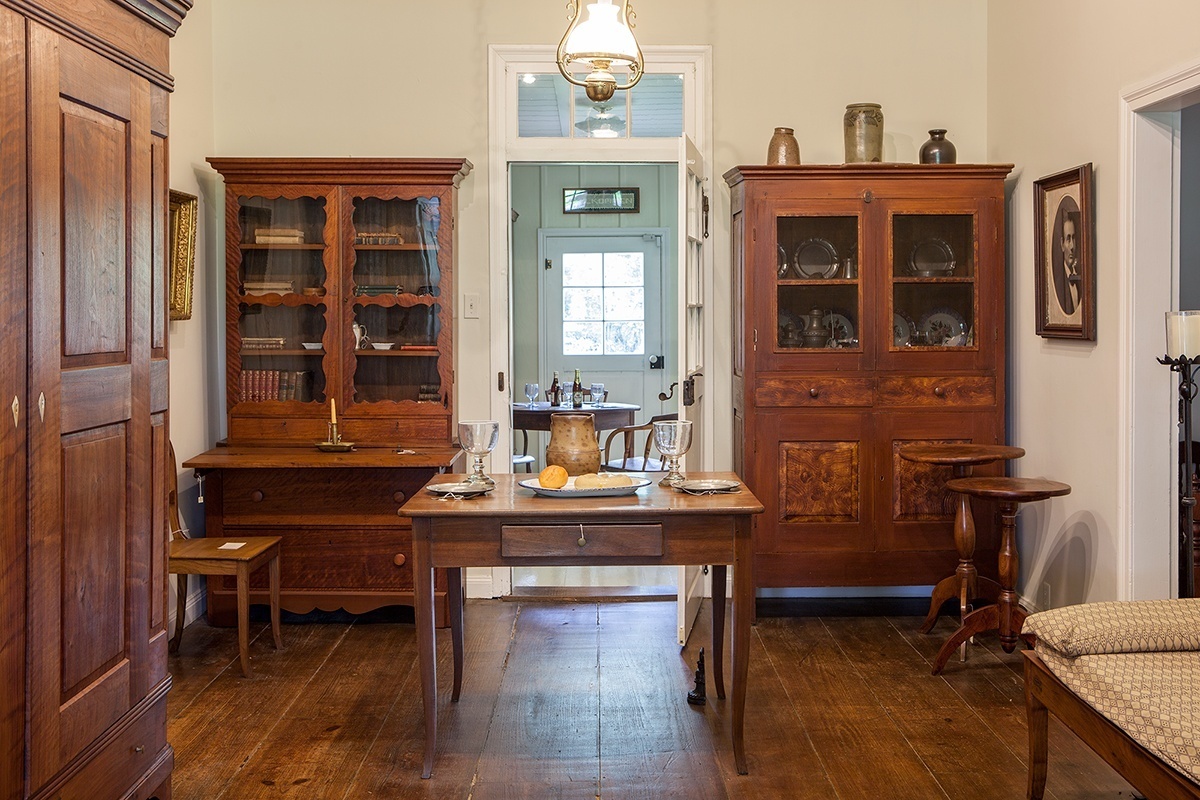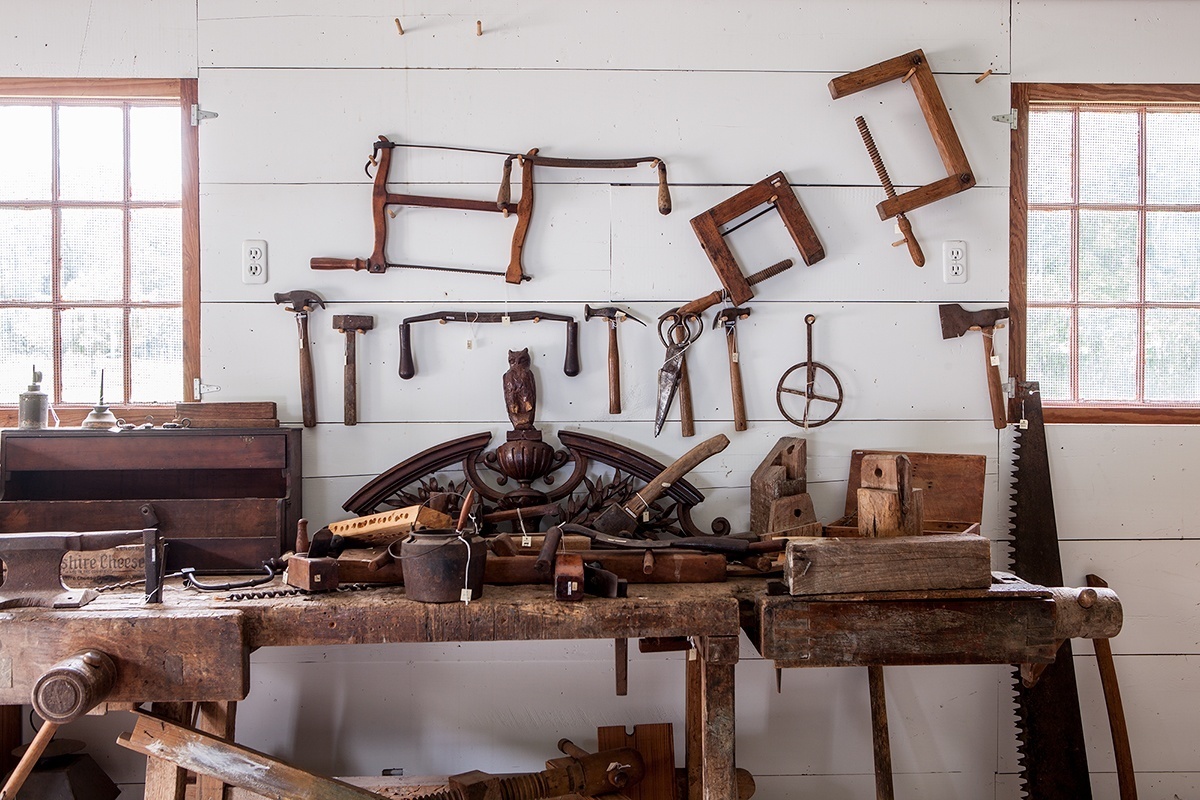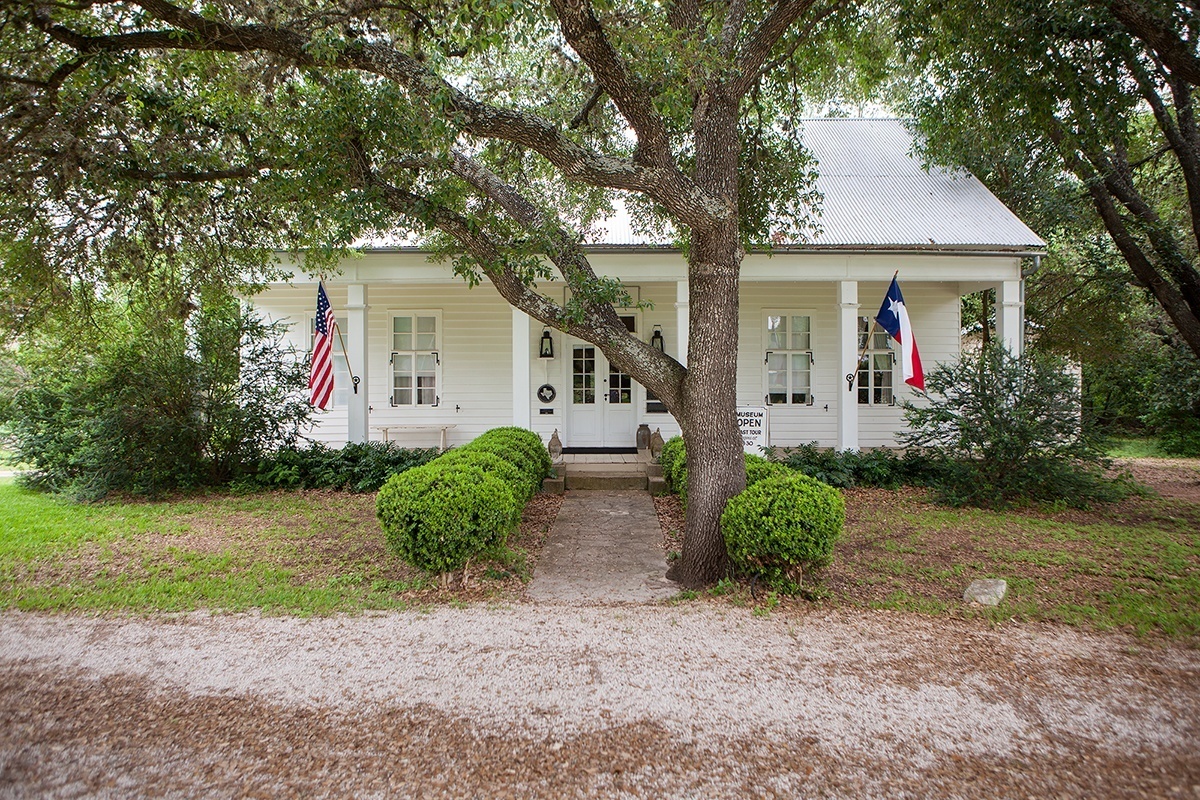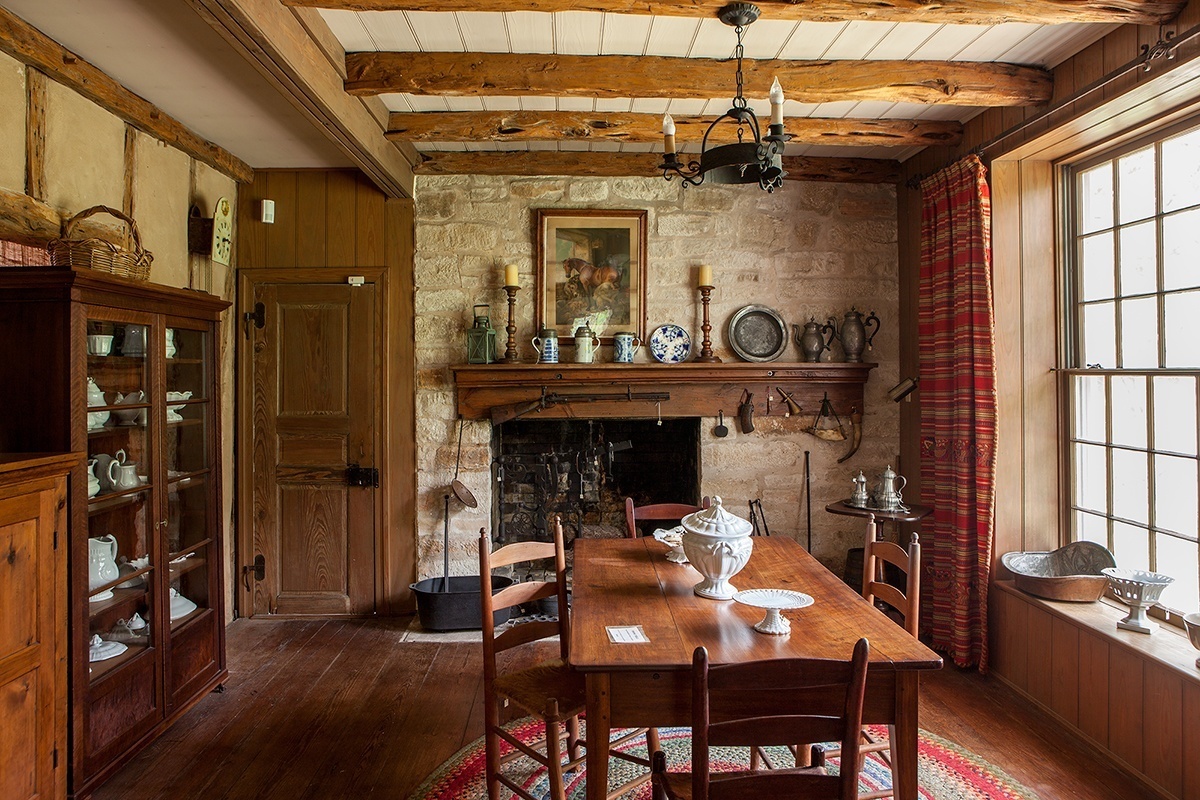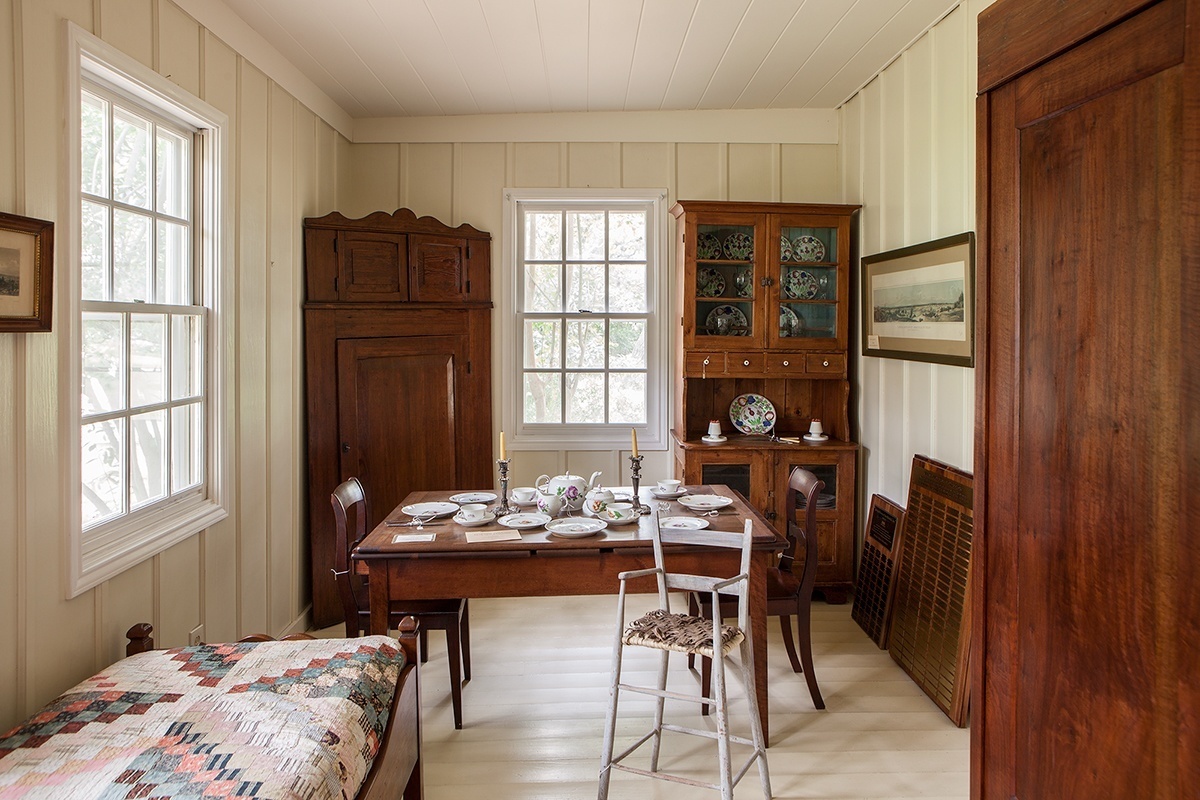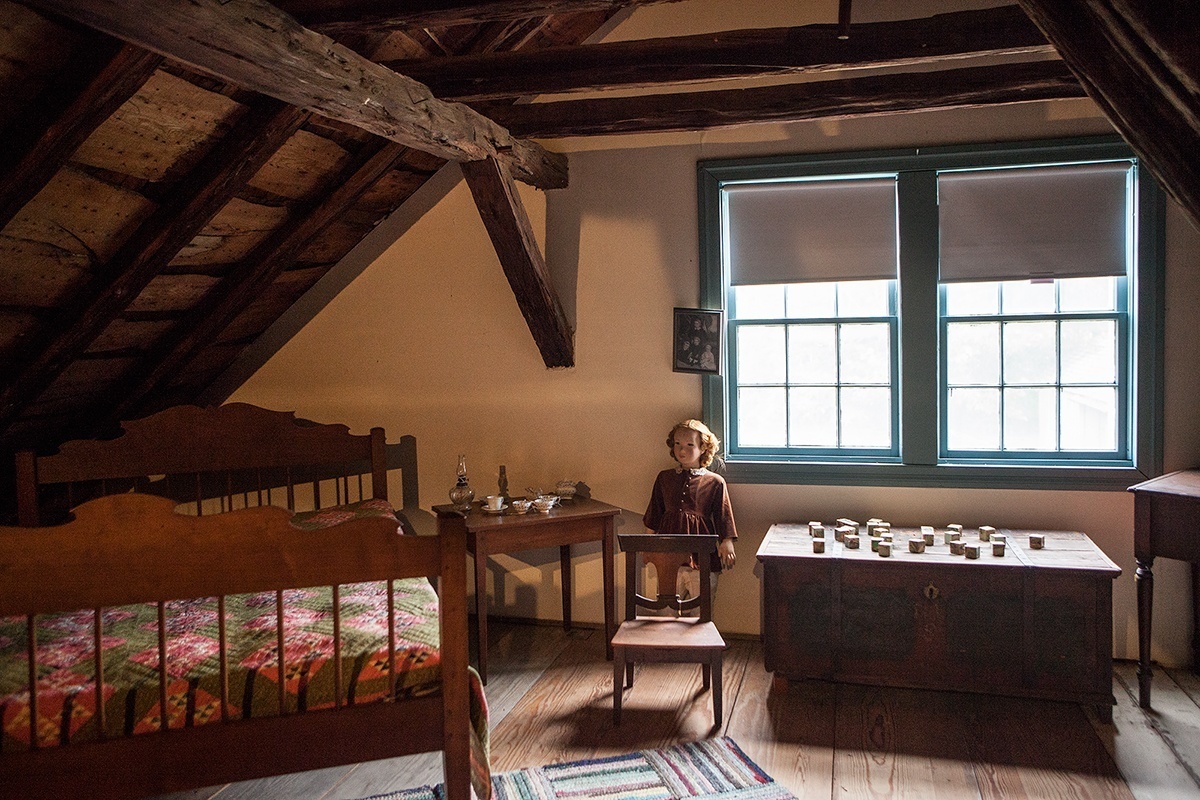The German immigrants who colonized the Hill Country of Texas in the late 1840s brought few pieces of furniture with them. There was little room for beds or wardrobes in the crowded ships that transported settlers across the Atlantic or in the wagons that carried them inland from the Gulf Coast ports to New Braunfels and Fredericksburg. When it was time to furnish their new houses, they turned to the cabinetmakers who had accompanied them from Germany, men who had learned their trade in Europe.
Between 1845 and 1875, these craftsmen produced an astonishing amount of furniture. Some of the finest examples of their work have been brought together at the Museum of Texas Handmade Furniture in New Braunfels.
“The Museum of Texas Handmade Furniture is remarkable for the depth and breadth of its collection of furniture from New Braunfels and Comal County,” says author Kenneth Hafertape, a professor of museum studies at Baylor University. “The collection also benefits from being displayed in the Andreas and Caroline Breustedt house, which blends German and American features.”
In the mid-1800s, at least 50 German-born cabinetmakers worked in New Braunfels and Fredericksburg, towns where residents were almost exclusively German. They made furniture in the styles that were popular in Europe, including the Biedermeier style, with its smooth surfaces, graceful curves and inlaid decoration, but they also worked in the Renaissance Revival, Gothic Revival and Elizabethan Revival styles. They used native walnut, cypress and pine, as well as imported mahogany and rosewood. At a time when Anglo-American cabinetmakers in the rest of Texas were setting up steam engines and turning their shops into small factories, the Hill Country Germans worked by hand on the human scale they had known in Germany.
The furniture makers usually worked in one room of their houses or in a nearby shed. They used hand tools brought from Germany, including the distinctive horned German smoothing plane, and worked alone or sometimes with an apprentice. They flourished until the mid-1870s, when the railroad made it possible to deliver inexpensive, factory-made furniture from the Midwest to even the most remote Hill Country farmer. The beautiful furniture they made continues to be much prized by today’s collectors.
The best known of the Hill Country cabinetmakers was Johann Michael Jahn, one of the original settlers of New Braunfels. Jahn was born in Pomerania in 1816, apprenticed in Prague, and worked in Switzerland before coming to Texas. His work was discovered by collectors in the 1940s and is well represented in the Museum of Texas Handmade Furniture.
Another New Braunfels cabinetmaker whose work appears in the museum collection is Heinrich Scholl, who, with his brother, Adam, made window sashes and doors in addition to furniture. Heinrich Scholl specialized in inlaid tables, and the museum has recently acquired one from his great-great-great-granddaughter, who lives in California but wanted the table to come home to New Braunfels.
Friedrich Wilhelm Tietze is one of the lesser-known Texas-German cabinetmakers. Census records indicate that he came to New Braunfels in 1845 and worked there for at least 25 years. The museum owns a simple low-post pine bed from his shop, typical of the furniture that was made for the humbler Hill Country settlers. The pine probably came from the Bastrop pine forest, a source of wood for the cabinetmakers.
One of the most talented of the Hill Country cabinetmakers was Franz Stautzenberger, a bachelor who came to Texas with his brother’s family and lived with them at Clear Spring, southeast of New Braunfels. In Germany, the Duke of Nassau employed Stautzenberger, but in Texas, he made furniture only for his family and friends.
The museum has a large and sophisticated walnut wardrobe made by Stautzenberger in 1860 for Nicholas Holz, a New Braunfels blacksmith. The wardrobe features a stylish pierced gallery mounted with acorn finials around the top, with a plaque in the center bearing the initials “NH” and the date 1860. The museum’s collection also includes an elm and mes-quite child’s chair with an Egyptian Revival back, and an upholstered sofa made by Stautzenberger for Holz.
Bill and Nan Dillen, interior decorators who came to New Braunfels after World War II and pioneered the collecting of Texas furniture, acquired the Tietze bed and the Stautzenberger pieces. Their collection formed the core of the Museum of Texas Handmade Furniture when it opened in 1984. Volunteers operated the museum until 2011, when Kathy Nichols came on board as its first professional director. In addition to furniture, the museum features a reconstructed cabinetmaker’s shop and hundreds of woodworking tools, and Nichols plans to expand the collections to include the work of other Hill Country cabinetmakers.
Bruce Shackleford, curator at the Witte Museum’s South Texas Heritage Center and an Antiques Roadshow regular, says, “Texas has a rich furniture tradition that is often overlooked by both scholars and collectors. The Museum of Texas Handmade Furniture exhibits some of the best examples of Texas furniture and helps preserve what little is left from the past.”
——————–
Lonn Taylor and David B. Warren wrote Texas Furniture: The Cabinetmakers and Their Work, two volumes (University of Texas Press, 2012).
